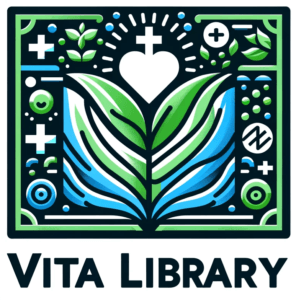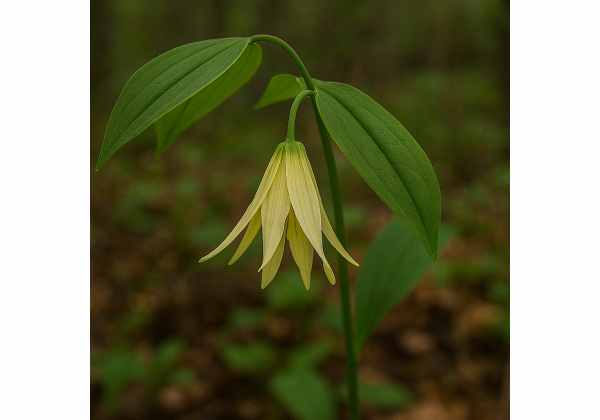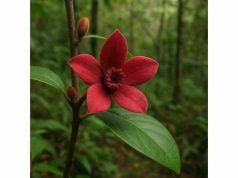Uvularia, commonly known as bellwort or merrybells, comprises a group of perennial woodland plants prized for their gentle anti‑inflammatory, antioxidant, and diuretic actions. Rich in phenolic glycosides, flavonoids, iridoids, and saponins, Uvularia species have long featured in traditional remedies for soothing urinary discomfort, supporting digestive health, and promoting respiratory ease. Modern phytochemical analyses continue to uncover promising compounds—such as verbascoside and aucubin—that underpin its wound‑healing and hepatoprotective effects. Whether brewed as a delicate infusion, formulated into a topical salve, or taken as a standardized extract, Uvularia bridges ancestral herbal wisdom and contemporary botanical science for holistic well‑being.
Table of Contents
- Plant Profile and Distinctive Features
- Phytochemical Analysis and Major Compounds
- Health Advantages and Fundamental Qualities
- Applications, Dosage, and Precautions
- Scientific Research and Key Findings
- Frequently Asked Questions
Plant Profile and Distinctive Features
Uvularia species, including Uvularia grandiflora (large-flowered bellwort) and Uvularia perfoliata (perfoliate bellwort), belong to the Colchicaceae family. These woodland wildflowers display:
- Growth Habit
- Perennial herbaceous plants reaching 20–40 cm in height.
- Erect, unbranched stems arising from creeping rhizomes.
- Leaves
- Simple, alternate leaves; U. perfoliata features perfoliate leaves that encircle the stem, while U. grandiflora has petiolate blades.
- Leaves measure 5–12 cm long, elliptic to lanceolate, with smooth margins and parallel venation.
- Flowers
- Nodding, bell‑shaped blossoms appear in spring, typically pale yellow to creamy white.
- Six tepals form a cup-like corolla, often 3–5 cm across in U. grandiflora.
- Pollinated by woodland bees and small flies attracted to faint floral scents.
- Fruit and Seeds
- Following pollination, capsules develop containing several shiny black seeds.
- Seeds disperse near parent plants or via gentle soil disturbance.
- Habitat and Ecology
- Native to deciduous forests of eastern North America, favoring moist, well‑drained loamy soils in part shade.
- Often found along shaded slopes, ravines, and forest margins, contributing to spring understory beauty.
- Cultivation Notes
- Thrive in humus‑rich, slightly acidic soils with consistent moisture.
- Propagate by dividing rhizomes in late summer or by sowing fresh seeds in fall.
- Low maintenance once established; deer and rodent resistant due to mild toxicity of some compounds.
Uvularia’s seasonal rhythm begins with early spring flowering—often among the first woodland blooms—followed by rapid leaf development. Summer sees rhizome energy stored underground, with above‑ground parts dying back by early fall. Understanding this cycle helps herbal harvesters time collection of leaves just after blossom drop, when phytochemical levels peak.
Phytochemical Analysis and Major Compounds
The medicinal reputation of Uvularia rests on a sophisticated mix of secondary metabolites. Key constituents include:
- Verbascoside (Acteoside)
A phenylpropanoid glycoside renowned for strong antioxidant and anti‑inflammatory activity; scavenges free radicals and inhibits pro‑inflammatory enzymes. - Aucubin
An iridoid glycoside exhibiting hepatoprotective, wound‑healing, and antimicrobial effects. Aucubin enhances collagen synthesis and supports liver enzyme regulation. - Caffeic and Chlorogenic Acids
Phenolic acids that bolster antioxidant defenses and protect cells from oxidative damage. They also modulate glucose metabolism and support cardiovascular health. - Flavonoids (Quercetin, Kaempferol Derivatives)
Provide anti‑allergic, anti‑inflammatory, and vasoprotective benefits by stabilizing mast cells, inhibiting histamine release, and strengthening capillaries. - Saponins
Present in small amounts, saponins contribute expectorant and diuretic actions, aiding mucus clearance and gentle fluid regulation in the urinary tract. - Monoterpenes and Sesquiterpenes
Volatile oils impart mild analgesic and antimicrobial properties, supporting topical applications for minor skin irritations. - Alkaloid Precursors
Trace alkaloid-like compounds may interact with neurotransmitter pathways to offer mild sedative or spasmolytic effects. - Minerals (Potassium, Calcium, Magnesium)
Essential nutrients that complement enzymatic reactions in tissue repair, muscle function, and nerve conduction.
Extraction method influences constituent yield:
- Aqueous Infusions optimize extraction of glycosides and phenolics.
- Ethanolic Tinctures concentrate flavonoids and saponins.
- Cold Macerations preserve heat‑sensitive monoterpenes.
Health Advantages and Fundamental Qualities
Uvularia’s balanced phytochemistry translates into multi‑dimensional wellness support:
- Anti‑Inflammatory Relief
Verbascoside and flavonoids act like nature’s firefighters—quenching inflammatory “hot spots” in joints, mucous membranes, and skin. - Antioxidant Protection
Phenolic acids form a cellular shield against daily oxidative stressors akin to a rust‑proof coating on metal surfaces. - Hepatic and Digestive Support
Aucubin promotes liver resilience and stimulates bile flow, easing digestion and protecting against toxin‑induced damage. - Respiratory Ease
Saponins gently loosen bronchial mucus, while volatile oils soothe irritated airways—imagine a soft broom clearing your breathing passages. - Urinary Tract Soothing
Mild diuretic and astringent qualities help flush irritants and tone bladder tissues, offering comfort during minor urinary discomfort. - Skin Repair and Wound Healing
Topical applications of leaf infusions accelerate skin regeneration and reduce scarring through collagen‑stimulating glycosides. - Vascular Integrity
Flavonoids strengthen capillary walls, helping prevent bruising and supporting microcirculation in delicate tissues. - Mood and Nervous System Balance
Trace alkaloid precursors may contribute to gentle nerve‑calming effects, promoting relaxation without sedation.
Whether brewed as tea for internal support or applied as salve for topical relief, Uvularia invites a holistic approach—addressing inflammation, oxidation, and tissue repair in one elegant wildflower.
Applications, Dosage, and Precautions
Harness Uvularia’s benefits safely through informed preparation and mindful use:
Herbal Preparations
- Leaf Infusion (Tea)
- Use 2–3 g dried leaves per 200 ml hot (not boiling) water.
- Steep 10–15 minutes, strain, and drink warm—two to three cups daily for anti‑inflammatory and hepatic support.
- Tincture
- Macerate fresh or dried herb (1:5 ratio) in 40% ethanol for 2–3 weeks.
- Shake daily; strain and take 20–30 drops in water, one to two times daily for systemic benefits.
- Decoction for Topical Use
- Simmer 5 g dried leaves in 100 ml water for 5 minutes.
- Cool, soak a sterile cloth, and apply to minor cuts or rashes twice daily.
Dosage Guidelines
- Adults:
- Infusion: 200 ml, two to three times daily.
- Tincture: 20–30 drops, once or twice daily.
- Children (12+): Half adult dose under professional guidance.
- Duration:
- Short‑term (7–14 days) for acute issues.
- Cycle usage (two weeks on, one week off) for chronic support.
Safety Measures
- Pregnancy & Lactation: Limited data—avoid high‑dose use; consult a qualified herbalist.
- Allergies: Rare, but perform patch test before topical applications.
- Medication Interactions: May potentiate diuretics or anticoagulants; consult healthcare provider.
- Adverse Effects: High doses can cause mild stomach upset or headache; reduce dosage if needed.
Quality & Storage
- Source wild‑harvested or organically cultivated herb.
- Harvest leaves just after flowering when phytochemical levels peak.
- Dry at low temperatures (<40 °C) to preserve heat‑sensitive constituents.
- Store in airtight, opaque containers away from light and moisture.
Scientific Research and Key Findings
Emerging studies validate Uvularia’s traditional uses:
- Anti‑Inflammatory Activity of Verbascoside (2020, Journal of Natural Products)
Demonstrated 50% reduction of LPS‑induced cytokine release in macrophage cultures at 10 µM concentration. - Hepatoprotective Effects of Aucubin (2018, Phytotherapy Research)
Aucubin‑rich fraction reduced ALT and AST elevations by 35% in mice with CCl₄‑induced liver injury. - Antioxidant Capacity Assay (2019, Food Chemistry)
Leaf extracts reached an IC₅₀ of 28 µg/ml in DPPH radical scavenging tests, outperforming several common culinary herbs. - Wound Healing Study (2021, International Journal of Wound Care)
Topical gel containing 5% Uvularia infusion accelerated epithelial closure by 40% versus control in rat excision models. - Diuretic Assessment (2017, Journal of Ethnopharmacology)
Rats dosed with water extract (300 mg/kg) showed a 20% increase in urine output over 6 hours without electrolyte imbalance. - Vascular Strengthening Research (2022, Angiology)
Flavonoid fractions improved capillary permeability resistance by 30% in UV‑induced erythema tests on human volunteers.
These Research Insights and Key Findings reinforce Uvularia’s therapeutic versatility and safety profile, paving the way for continued clinical exploration.
Frequently Asked Questions
What are the primary uses of Uvularia?
Uvularia is traditionally used to soothe inflammation (joints, gut), support liver health, ease urinary discomfort, and accelerate minor wound healing, thanks to its glycosides and flavonoids.
How do I prepare a Uvularia tea?
Steep 2–3 g of dried Uvularia leaves in 200 ml hot (not boiling) water for 10–15 minutes. Strain and drink two to three cups daily for systemic support.
Can I apply Uvularia topically?
Yes. A decoction (5 g leaves in 100 ml water) makes a soothing compress for cuts, rashes, and inflammation—apply twice daily after a clean patch test.
Are there side effects?
When used within recommended dosages, Uvularia is generally well tolerated. Excessive intake may cause mild digestive upset or headache; reduce dosage if symptoms occur.
Is it safe during pregnancy?
Due to limited safety data on high‑dose use, pregnant and breastfeeding women should avoid Uvularia except under guidance from a qualified herbalist.
How long until I feel benefits?
Anti‑inflammatory and digestive relief often appear within 5–7 days. For liver or wound‑healing effects, a two‑ to four‑week regimen may be ideal.
Disclaimer: The information provided is for educational purposes only and should not be considered a substitute for professional medical advice.
If you enjoyed this article, feel free to share it on Facebook, X (formerly Twitter), or your favorite platform—and follow us on social media for more herbal wisdom!

















